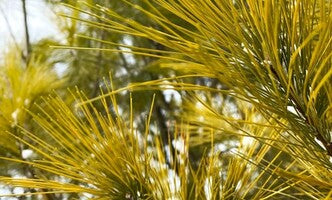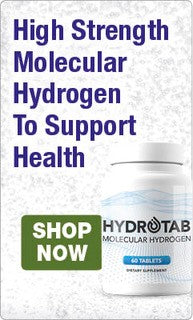Just about every sort of pain in the body is caused by inflammation.
Therefore, potent anti-inflammatory compounds are essential to combat pain.
Common over the counter pain relief is basically an anti-inflammatory drug.
However, there are many side effects from taking over-the-counter medication.
Thankfully there are other natural compounds that can help combat pain.
Many medical companies are now realising the serious side effects of commonly used antioxidants and medications.
Such as butylated hydroxy-anisole (BHA) and tertiary butyl hydroquinone (TBHQ).
As such, there’s been a rise in interest in natural compounds that have antioxidant, and anti-inflammatory properties.
Meaning that there’s a growing body of research to substantiate the effectiveness of natural compounds on human health.
This can help substantiate the long held traditional beliefs about substances, such as pine needle teas, pine cones, pine bark and tinctures.
In this article, we’ll explore pine needle tincture, how it was used in ancient times, and more recent scientific studies that back up ancient wisdom.
Benefits of Pine Needle Tincture & How It Works
Pine needle tincture contains several compounds that can have medicinal effects on the body. The compounds in pine needle tincture include - α-terpineol (30.2%), linalool (24.47%), limonene (17.01%), anethole (14.57%), caryophyllene (3.14%), and eugenol (2.14%). Pine needle essential oil (1) has also been found to have powerful antioxidant properties for scavenging free radicals and reducing damage to the outer lipid layer of cells. This is due to pine trees containing Oligomeric Proanthocyanidin Compounds (OPCs) that powerfully impact homeostasis in the body. OPCs can balance out the systems in the human body.
The shikimic acid pathway is a metabolic pathway that produces many important amino acids and neurotransmitters that are essential for human health. Pine needle tincture contains shikimic acid, which may help stimulate this pathway and increase production of these substances in the body. One 2004 study discovered that pine trees (2) , in particular, the bark contained compounds that reduced inflammation markers in the body. Inflammation is one of the leading factors in many diseases, including headaches and other painful chronic diseases.
Learn more: What is the Shikimic Acid Pathway and Why Should You Care?
Ancient Wisdom For Modern Times

Pine needle tincture is made from the needles of pine trees. It’s a powerful antioxidant and anti-inflammatory, which means it can help the body fight free radicals and prevent cell damage.
Pine needle tincture has been used for thousands of years in traditional Chinese medicine (TCM). In TCM, pine needle tincture is used to improve digestion, reduce inflammation and manage pain.
The famous Greek father of medicine - Hippocrates used pine needle teas way back in 400BC for bacterial infection and to support immune function. In ancient Egypt, people would add pine needles to their cooking to kill food bacteria. In Turkish folk medicine, Pinus species have been used to treat rheumatic pain and for wound healing (3). This has been found to be true in recent studies, especially when drawing the pine tincture directly from the pine cones, rather than the full grown tree.
Human Enlightenment, The Third Eye & The Pineal Gland
What’s interesting is that the pine cone is a concentrated version of the tree itself. Plus it’s been found to contain the most potent healing properties. The pine cone has been used throughout the span of recorded human history to represent enlightenment, the pineal gland and the third eye. There’s a mysterious connection between pine trees, pine cones, the pineal gland, human DNA and light. It's thought that the compounds in pine trees activate light pathways that contribute to longevity.
The ability to balance and process emotions in a positive way has been attributed to, in part, Dehydroepiandrosterone (4) (DHEA). Which is found in abundance in the pollen of the pine tree. It’s not normally an irritant to human health (unlike other tree pollen). This emotional regulation is akin to that of enlightened monks. Hence the connection between pine cones and human life deepens. The pineal gland is often represented by the pine cone. The pineal gland secretes melatonin and helps regulate circadian rhythm based on photons hitting the retina of the eye and stimulating a cascade of electrophysical effects. The pineal gland is also intimately connected to the hypothalamic, pituitary, adrenal axis. This is the system that promotes stress or relaxation in the body.
You Say Pine Needle, I Say Pinus Sylvestris
Pinus Sylvestris is a fancy scientific name for Scots pine or Baltic pine. The scientific name is helpful, as it allows us to look up scientific studies. Such as the recent mouse study published this year - June 2022. Whereby, researchers found out that inhalation of Pinus Sylvestris can improve airway function (5). The simple addition of a pine needle tincture into your daily routine can help aid the body in cleansing many free radicals and other bacteria that can build up and produce disease.
In modern medicine, pine needle tincture is sometimes used as an astringent to help heal wounds and skin infections. It may also be used as an expectorant to help thin mucus in the lungs. Finally, pine needle essential oil has been found to kill thirteen species of airborne bacteria (6). Humans share some of their DNA with pine trees. But the pine tree has been found to have the largest genome to be sequenced. In comparison the human genome has 3 billion base pairs, while a pine tree has been found to have 22 billion base pairs. This means that the pine tree has more than 7 times the amount of genetic material. There's no wonder it's such a medicinal plant.
In Conclusion
The pine tree has a mysterious connection to human health, as well as enlightenment and wisdom. It’s been used for thousands of years for healing all sorts of ailments. Recent scientific evidence has brought pine needle tincture, and other pine tree extracts to the forefront of the healing circuit. Showing that the ancient healers were right in their observational research into the pine tree. If you’re looking for a substance that has extraordinary healing properties, look no further than Pinus Sylvestris.
Written by Rowanna Watson, who has a passion for natural health. Rowanna is an expert in all areas of holistic health, plant-based nutrition, detoxification Written by best-selling author and integrative nutrition health coach and personal development.
Water for Health Ltd began trading in 2007 with the goal of positively affecting the lives of many. We still retain that mission because we believe that proper hydration and nutrition can make a massive difference to people’s health and quality of life. Click here to find out more.
Updated
Sources:
1. Zeng WC, Zhang Z, Gao H, Jia LR, He Q. Chemical composition, antioxidant, and antimicrobial activities of essential oil from pine needle (Cedrus deodara). J Food Sci. 2012 Jul;77(7):C824-9. doi: 10.1111/j.1750-3841.2012.02767.x. PMID: 22757704. https://pubmed.ncbi.nlm.nih.gov/22757704/
2. Karonen M, Hämäläinen M, Nieminen R, Klika KD, Loponen J, Ovcharenko VV, Moilanen E, Pihlaja K. Phenolic extractives from the bark of Pinus sylvestris L. and their effects on inflammatory mediators nitric oxide and prostaglandin E2. J Agric Food Chem. 2004 Dec 15;52(25):7532-40. doi: 10.1021/jf048948q. PMID: 15675800. https://pubmed.ncbi.nlm.nih.gov/15675800/
3. Süntar, Ipek & Tumen, Ibrahim & Ustün, Osman & Keles, Hikmet. (2011). Appraisal on the wound healing and anti-inflammatory activities of the essential oils obtained from the cones and needles of Pinus species by in vivo and in vitro experimental models. Journal of ethnopharmacology. 139. 533-40. 10.1016/j.jep.2011.11.045. https://www.researchgate.net/publication/51865595
4. Sripada RK, Marx CE, King AP, Rajaram N, Garfinkel SN, Abelson JL, Liberzon I. DHEA enhances emotion regulation neurocircuits and modulates memory for emotional stimuli. Neuropsychopharmacology. 2013 Aug;38(9):1798-807. doi: 10.1038/npp.2013.79. Epub 2013 Apr 3. PMID: 23552182; PMCID: PMC3717538. https://pmc.ncbi.nlm.nih.gov/articles/PMC3717538/
5. Csikós E, Csekő K, Kemény Á, Draskóczi L, Kereskai L, Kocsis B, Böszörményi A, Helyes Z, Horváth G. Pinus sylvestris L. and Syzygium aromaticum (L.) Merr. & L. M. Perry Essential Oils Inhibit Endotoxin-Induced Airway Hyperreactivity despite Aggravated Inflammatory Mechanisms in Mice. Molecules. 2022 Jun 16;27(12):3868. doi: 10.3390/molecules27123868. PMID: 35744988; PMCID: PMC9229653. https://pmc.ncbi.nlm.nih.gov/articles/PMC9229653/
6. Motiejūnaite O, Peciulyte D. Fungicidal properties of Pinus sylvestris L. for improvement of air quality. Medicina (Kaunas). 2004;40(8):787-94. PMID: 15300001. https://pubmed.ncbi.nlm.nih.gov/15300001/




























Leave a comment